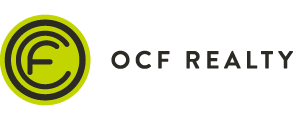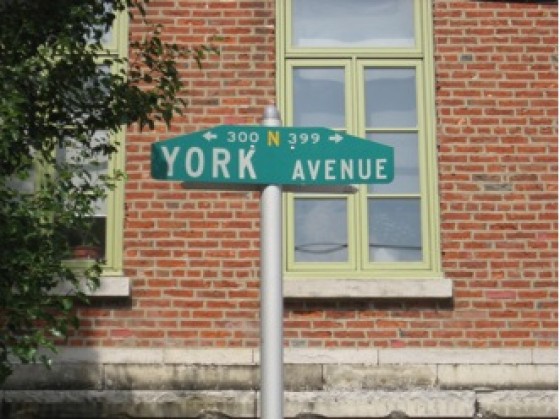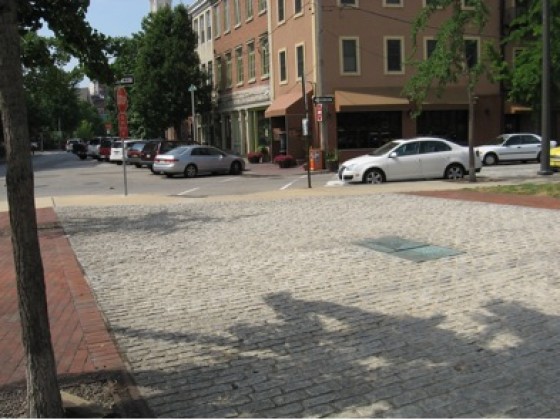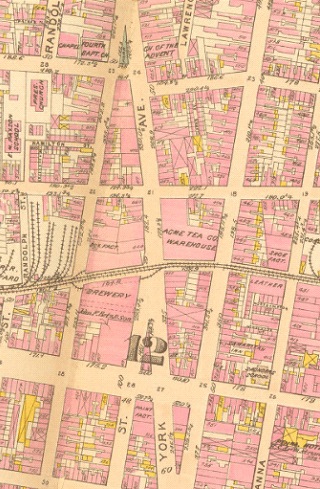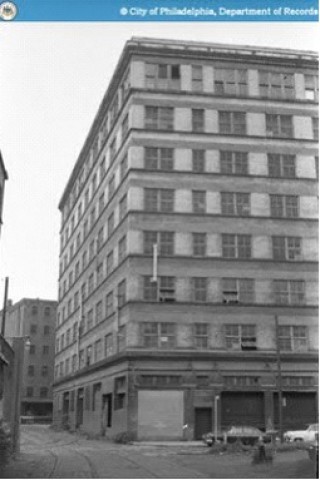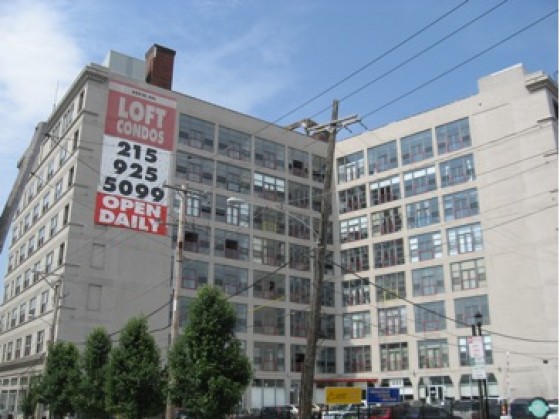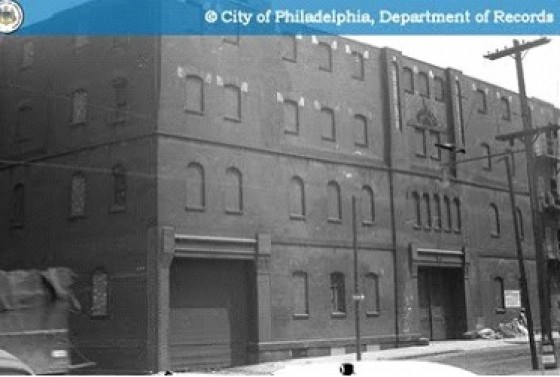Ever drive or walk or bike down Fourth St. and notice how, right between Wood St. and Vine St., the road widens on the right and then gradually thins back into its original width within one block? That’s not just a quirk of crazy angle parking- it’s a street. Not even a street… an Avenue, as in a wide street used as a thoroughfare across neighborhoods. That block-long half-street is all that remains of York Avenue.
Look back in time at an old map, and the once illustrious York Avenue makes its appearance. All that remains today is a little dinky wedge south of 676.
For most of its life, York Ave. ran from 4th & Vine St. to 5th & Spring Garden St., going back to the times when 5th St. was the end of Spring Garden St. It was much longer when first laid out in 1711, but was for the most part a dirt path through forest and fields. In the mid to late 1800’s, York Ave. was a bustling, well-traveled highway. One of York’s best features was a small triangular intersection formed by itself, Fifth, and Buttonwood Streets. A small triangular island with trees also had beautiful church buildings on either side. Buttonwood was a major commuter street at the time for workers at the Baldwin Locomotive Works at Broad, so a lot of traffic ran through the triangle.
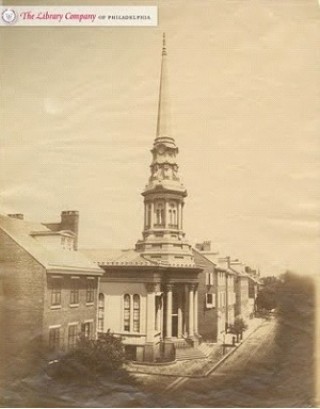
Fourth Baptist Church on the west side of the triangle in 1858. Image from the Library Co. of Philadelphia
Two blocks south of the triangle, the Willow St. freight tracks ran across York Ave. If you were walking or horsing (you know, riding a horse. Horsing. Look it up) down York you’d have to watch out for the quarter-mile-long freight train possibly rolling through at any given time. Back then, a lot of businesses would keep their warehouses and factories along freight routes so they could move large amounts of goods.
At the corner of York & Willow, a little Philly-bred start-up food business called Acme Tea Company had its warehouse. In the early 1900’s, the rapidly expanding company ran corner stores throughout the city and later the region, keeping their stock stored at York and Willow. If you don’t know what happened to Acme after that, you probably just moved here. Welcome! The building still stands today as the 444 Lofts.
Cater-corner from the Acme warehouse was the back of the legendary John F. Betz & Sons Brewery. John Betz was a descendant of a family of brewers who made George Washington’s favorite beer. He was also the brother-in-law of D.G. Yuengling, who had a little brewery of his own. Betz’s beer was loved throughout the country and people still collect their wares today. Betz’ brewery tanked after the prohibition but Yuengling survived, brewing ice cream instead of beer.
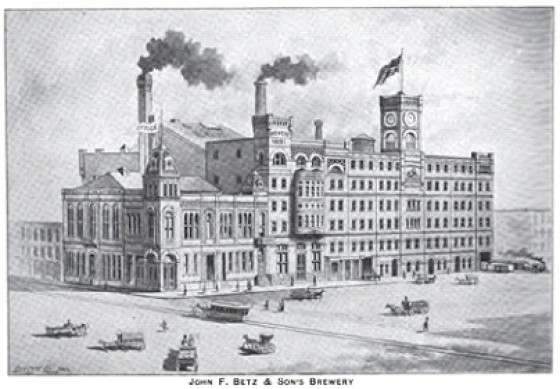
From its 5th St. frontage. Check out the Willow Street tracks in the foreground. Picture from the North American, an old Philly paper.
The piece of York Ave. that ran by the Acme warehouse and the Betz Brewery is the only other section of it that still exists. It’s still paved in Belgian Blocks and a sliver of the Willow Street freight tracks still pops out of the pavement.
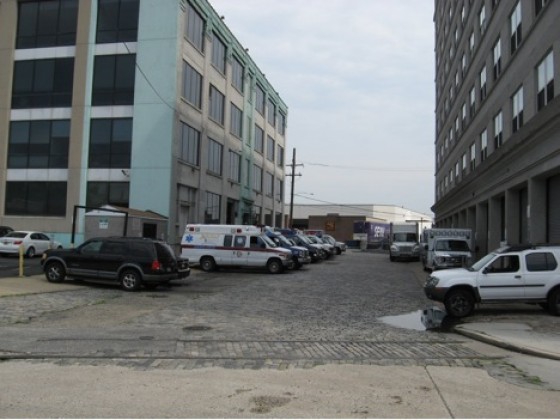
The only other remaining section of York Ave. Old Acme warehouse on the right, unremarkable old Box Factory on the left. Willow Street tracks in front.
Come back a little later today to find out why York Ave. disappeared in the first place. More pictures, too!
